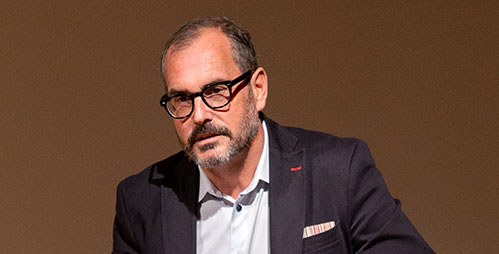On October 29th 2018, Intertrust and our partner LINE jointly held our 4th Security Summit entitled “Preparing for the Data-Driven Future” in Rome, Italy. This is the third in a series of blog posts on the event; the first one can be found here and the second one can be found here.
When people discuss data and business, quite often the topics are about how data analytics can drive such things as business model development, supply chain management, or process optimization. At the Security Summit, Roland Hess, Senior Vice President at the major European utility innogy, talked about how his company is using data to successfully change their corporate culture and how it led to an investment in a Silicon Valley startup. To start, Hess pointed out that for companies their one true competitive advantage is their talent. Yet, data is something not widely used in human resources. For example, managers mainly rely on intuition when making hiring decisions yet “intuition doesn’t scale,” (Hess).
For innogy, data helped them understand the changes they needed to make to their corporate culture to overcome a crisis. In 2012, after Germany decided to phase out nuclear power plants, it became clear to innogy (the company was actually part of RWE at this time) that their traditional business model based on selling electrons was soon to be obsolete. The company now needed to be able to rapidly adopt new business models and ways of thinking. “How can we change what we are doing and lead the organization to a future which was fundamentally different?” (Hess).
Corporate culture was identified as a major issue. The average employee was around 50 years old, male, German, and had been with the company for 20 years. Hess and the team did an internal survey of their leaders asking them to evaluate themselves against their peers. The results were concerning to say the least. In five out of nine categories, leaders rated themselves in the 3rd or 4th quartile, i.e. very low. Using these results, the company identified four different mental models weighing down their leadership. These included not acting on new corporate initiatives since achievers weren’t typically awarded and a tendency to operate in silos and not consider the entire operations of the company.
Since the issues were identified with leaders, innogy instituted a cultural change program under the slogan, “Change starts with me.” “If I change my behavior, then the team will change and the organization will change,” (Hess). A team of 350 employees is now charged with actively pursuing organizational culture changes, 25,000 have gone through the program already and a further 15,000 are currently in the program. As a result of this effort, Hess claims the company was able to realize “a half billion cash flow improvements.”
While Hess and innogy consider their program a success, Hess went to the board of directors to say that because the company surveys its employees once a year, is still acting too slow. This led to innogy investing in a Silicon Valley startup called Plause. “The idea behind this is instead of annual surveys you create an online stream of data every day,” said Hess. With this flow of data, Hess says that managers can now use data to have informed conversations with their employees and measure progress.
About Phil Keys
Phil Keys is a Director, Comms & Research for Intertrust Technologies. He is a veteran technology industry observer, marketer, connector, and writer based in Silicon Valley. In addition to 13 years of experience as a Silicon Valley Correspondent for Nikkei Business Publications, Phil has worked for technology companies in both the US and Japan. Phil has spoken publicly in events in Tokyo and Silicon Valley as well as moderated panels in Silicon Valley. He holds a B.A. from the University of California at Berkeley and attended International Christian University in Tokyo.
